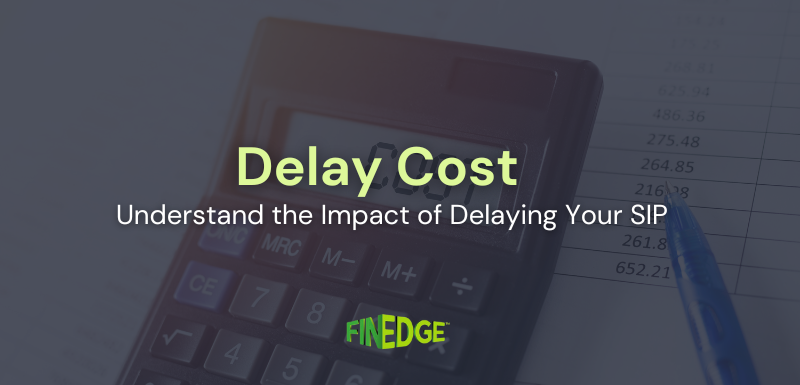Benefits of Investing in SIPs for Goals: How SIPs Align with Your Financial Milestones
- SIPs align naturally with long-term goals due to their disciplined and flexible structure.
- They allow you to start small, invest regularly, and take advantage of compounding.
- SIPs reduce emotional investing and help navigate market volatility.
- Ideal for goal-based investing when paired with proper planning and review.
For Indian investors focused on goal-based investing, SIPs offer one of the most effective routes to financial success. Whether you’re planning for your child’s education, your dream home, or a comfortable retirement, SIPs help you stay consistent and resilient through market ups and downs. This blog explores how SIPs support specific financial goals through disciplined investing, and why they’re a strong fit for long-term wealth creation.
Why SIPs and Goals Work So Well Together
A Systematic Investment Plan (SIP) allows you to invest a fixed sum at regular intervals, usually monthly, into mutual funds. The structured nature of SIPs makes them ideal for long-term financial goals that require consistency, patience, and the benefit of compounding.
Let’s explore the key advantages.
1. They Help You Invest Consistently and Automatically
SIPs automate discipline. Once set up, your bank account auto-debits on the selected date and the amount is invested in your chosen mutual fund. This eliminates the temptation to time the market or delay investing.
Example
Someone who starts a ₹5,000/month SIP for their child’s education when the child is 5 can build a corpus of ₹15-20 lakhs by age 18 assuming an average 11–12% return.
2. You Can Start Small and Increase Gradually
Many SIPs allow a minimum amount of ₹100 or ₹500, making it accessible even to early earners. And with Step-Up SIPs, you can increase your contribution annually as your income grows.
This ensures that your investments grow with your financial capacity and helps you reach larger goals without large sacrifices upfront.
3. You Benefit from Rupee Cost Averaging (RCA)
Since markets fluctuate, SIPs help you average your purchase cost over time. In rising markets, you buy fewer units. In falling markets, you buy more. Over years, this smooths out volatility.
This averaging can protect your corpus from sharp market corrections - an essential quality when saving for non-negotiable goals.
4. You Create a Direct Link Between Investments and Life Goals
The best financial plans are those where each SIP is mapped to a specific objective:
-
Education fund for children
-
Retirement fund for self and spouse
-
Down payment for a home
When you know what you’re investing for, you’re more likely to stay committed.
A 2023 FinEdge blog highlighted that goal-linked SIPs had significantly lower discontinuation rates compared to ad-hoc investing.
5. Compounding Has Time to Work Its Magic
The longer you stay invested, the more your money compounds. This is especially effective for goals that are 10+ years away, such as retirement or college education.
Even if you pause SIPs temporarily, the accumulated corpus continues to grow.
Example
₹10,000/month invested for 20 years at 11% = ₹76 lakhs invested, ₹84 lakhs growth → Total = ₹1.6 Cr+
6. They Can Be Customized Per Goal
Want to be more aggressive for long-term goals and conservative for near-term ones? SIPs let you do that by choosing different mutual fund categories - equity, hybrid, or debt - based on the timeline and risk tolerance.
This flexibility is what makes SIPs a portfolio of plans rather than a one-size-fits-all solution.
7. SIPs Reduce Behavioural Mistakes
Investors often fall prey to emotional decisions; stopping investments when markets fall, or chasing fads.
But SIPs help reduce the impact of such behaviour. By automating the process, they make investing feel like a regular habit rather than a tactical decision.
In a 2020–2021 market dip, FinEdge clients who continued goal-based SIPs recovered faster than those who exited or paused prematurely.
Planning Makes SIPs Work Better
While SIPs are a powerful tool, they work best when they’re:
-
Part of a financial plan
-
Monitored periodically
-
Aligned with realistic return expectations
SIPs aren't magic wands. But when mapped to a clear plan, reviewed annually, and invested in the right funds, they’re one of the best routes to financial independence.
Ready to Align Your Goals with the Right SIP Plan?
A disciplined, goal-linked SIP can help you steadily move toward your dreams, without stress or second-guessing.
Your Investing Experts
Continue Reading
Cost of Delay in Investment: Why Starting Early Matters
Many investors assume that postponing their SIP temporarily has a minor impact. In reality, the true loss comes from the compounding opportunity that disappears with every missed month. A consistent approach is far more powerful than trying to compensate later by investing larger amounts.
How to Cancel Your SIP Online: A Step-by-Step Guide
Stopping a Systematic Investment Plan (SIP) is simple but following the right steps ensures your cancellation request is processed smoothly without delays.
How to Build a ₹1 Crore Portfolio: A Practical Guide for Indian Investors
Reaching ₹1 crore isn’t about luck or timing, it’s about discipline, consistency, and the patience to let compounding work in your favor.
.png)

.png)
